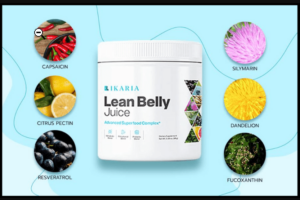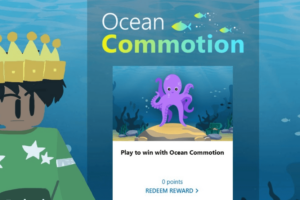Boiling water is a common method of destroying bacteria and making water safer to drink. What about ocean water? Can you drink ocean water if you boil it?
You cannot drink ocean water after boiling it. Boiling water destroys harmful bacteria, but ocean water is very salty (saline). Boiling does not remove the salt and other impurities present in the ocean water.
The average-sized adult would die after drinking about 2 gallons of ocean water, boiled or not boiled.
You can drink ocean water if you follow a specific process, called desalination, to get rid of the salt present in the seawater.
Desalination can be done through reverse osmosis or distillation.
Read on to learn more about the effects of drinking ocean water on your body and the technology that makes ocean water safe for drinking.
Can You Drink Ocean Water If You Boil It?
You cannot drink ocean water after boiling it. Boiling does not remove the salt and other impurities present in the ocean water. Drinking about 2 gallons of ocean water is enough to kill the average-sized adult.
If only humans could drink ocean water as is, water shortage would not be a problem. However, you can only drink ocean water if it has undergone desalination, such as distillation or reverse osmosis. Simply boiling the ocean water is not enough for it to be safe for drinking.
Approximately 97% of the Earth’s water is saline, and oceans cover about 70% of the Earth’s surface. Meaning, there’s a lot of salty water on our planet. However, you cannot drink it as is. Drinking salty water can dehydrate you even when you drink bucket loads of it.
In fact, according to the National Oceanic and Atmospheric Administration (NOAA), if the salt in all our oceans could be removed and spread on the Earth’s land surface, it could create an even layer 500 feet (166 meters) thick. That’s about the height of a 40-story building!

What Does “Saline Water” Mean?
Saline water contains significant amounts or “concentrations” of dissolved salts. Scientists measure concentration by measuring the amount of salt in water in “parts per million” (ppm).
Here are the different sources of water and their salinity level:
- Freshwater – Less than 1,000 ppm
- Slightly saline water – From 1,000 ppm to 3,000 ppm
- Moderately saline water – From 3,000 ppm to 10,000 ppm
- Highly saline water – From 10,000 ppm to 35,000 ppm
For perspective, ocean water contains about 35,000 ppm of salt, making it a highly saline water source.
How Long Do You Microwave Water to Boil?
How Safe Is Drinking Ocean Water?
We already know that 97% of the Earth’s waters are saltwater, 2% is ice, and only 1% is freshwater readily available for humans to drink. In this regard, humans cannot safely consume ocean water.
Needless to say, drinking ocean water can definitely be deadly to humans. The National Ocean Service explained that while it is safe to ingest small amounts of salt (such as when used as a condiment in food), drinking ocean water – which has far more salt content – can cause serious damage if e death.
What Does Saltwater Do to Your Body?
It is a fact that living cells depend on sodium chloride or salt to keep different chemical reactions in the body balanced, but too much salt inside our system can be extremely damaging.
To put things in perspective, when we take in trace amounts of salt as part of our normal diets, we also balance it out with different fluids to help dilute the salt and keep it at a healthy level.
Since the salt content in ocean water is way higher than what the human body can ever process, consuming it as a normal fluid will potentially kill you even with a low-sodium diet.
So, why can’t you drink ocean water? What does salt water do to your body?
- Increases the salinity of your blood. This will cause cells to shrivel up and die;
- Drinking salty water can really kill your cells by making you thirstier even when you are already full of water;
- It will take a toll for your kidneys to get rid of too much salt from your body; and
- You will have to urinate more water than you initially drank, which causes dehydration in the long run.
Can you drink ocean water if you boil it? Can you drink salt water?” You cannot drink ocean water or salt water just by boiling it. Boiling does not remove the salt and other impurities present in the ocean water.
Why can’t you drink ocean water? Ocean water has about 35 grams of salt per liter. That high percentage of salt will dehydrate your cells and flush fresh water out of your body. If you drink too much ocean water (about 2 gallons), it will kill you.
Next, let’s discover how ocean water can be converted into drinking water below.
How Long Does It Take to Urinate After Drinking Water?
How to Desalinate Seawater?
As stated earlier, boiling ocean water is not enough for it to be suitable for drinking. Desalination is needed.
Desalination is the umbrella terminology for several different technologies. Its purpose is to remove dissolved materials – including but not limited to salt – in ocean water, brackish water, and even wastewater.
There are three core methods of desalination: thermal, electrical, and pressure-based. Some desalination techniques include:
- Reverse Osmosis (RO)
- Thermal Distillation
- Simple Distillation
- Steam Distillation
- Fractional Distillation
- Vacuum Distillation
- Electrodialysis
- Vacuum Freezing
1. Reverse Osmosis (RO)
Used in a lot more than just desalination, Reverse Osmosis is a useful process that aids in wastewater treatment, recycling, and even producing energy. RO uses pressure to force unfiltered water through a semipermeable membrane. The resulting freshwater is called permeate, while the substance left with contaminants is called brine.

2. Thermal Distillation
Thermal Distillation is a multi-use process. Aside from desalination, this is used for alcohol purification, crude oil refining, and making liquefied gases from the air. One of the oldest processes in history, distillation, has been used since at least 3000 BC.
It works by boiling the ocean water and then collecting the steam, thus leaving the salt content behind. This is the closest method to just plain boiling water; thus, the confusion in most people that ocean water can just be boiled to render it safe for drinking.
There are different types of distillation – simple distillation, fractional distillation, and destructive distillation.
3. Simple Distillation
Scientists utilize simple distillation when two liquids need to be separated have significantly different boiling points or separate solids and nonvolatile particles from liquids. It works by heating a mixture to change the most volatile part from liquid to gas. Then, the vapor passes through a condenser.
4. Steam Distillation
Experts use this to separate heat-sensitive components from each other. Steam distillation works by adding steam into the mixture, causing some of the components to vaporize. The resulting vapor is cooled and condensed to two different fractions.
5. Fractional Distillation
Fractional distillation is used when components of a mixture have boiling points that are closer to each other. A mixture is heated so that vapor is created and enters a fractionating column. As it cools, the vapor condenses on the packing material of the column it is in. The continuous heat of the rising vapor would cause the liquid to vaporize again, eventually yielding a higher purity sample.
6. Vacuum Distillation
Components with high boiling points can be separated using vacuum distillation. This process is particularly useful when the normal boiling points of components exceed the decomposition temperature.
7. Electrodialysis
Electrodialysis is seen as a more energy-efficient way of desalination and a good alternative to RO. This process works by transporting salt ions through ion-exchange membranes from one solution to another by an applied electric potential difference. This technique is different from RO and distillation in that dissolved particles are moved away from the stream rather than the reverse.
8. Vacuum Freezing
Also called Freeze Desalination or Freeze Crystallization, it works by using a freezing-melting process. Experts allow water to freeze (crystallized) then separated from its saline solution. In contrast to the thermal distillation process, vacuum freezing utilizes the phase change of water from liquid to solid instead of liquid to gas.
It works by separating ice crystals from the brine, cleaning them off to remove more salt crystals on the surface, and melting the rest of it to produce fresh water.

Cost of Converting Seawater to Drinking Water
You might be asking, if there are indeed these technologies available for ocean water treatment, why aren’t we doing more of it to address the demand for clean drinking water? After all, the oceans are vast and virtually limitless.
You are right. Ocean water is such an attractive water resource because it is a reliable and unlimited water resource for coastal areas worldwide. Brackish water, on the other hand, is a fairly drought-proof resource for a population located inland. So why not just treat these water resources more to create potable water?
Two words: technological cost.
Of the over 13,000 desalination plants operating worldwide today, about 60 % is located in the Middle East. In contrast, only 12% of the world’s capacity is produced in the Americas (i.e., the Caribbean and Florida).
The largest desalination plant globally is in Saudi Arabia, which produces 128 million gallons per day (MGD) of desalinated water. That is a lot of water coming only from one region, driving up water costs for those who get it via importation.
Besides, thermal distillation processes require significant amounts of energy, especially during the process’s vaporization phase. Energy is costly anywhere in the world. That is why more modern methods are being developed that use the same core principles of distillation, just not at the huge cost of energy.
Conclusion – Can You Boil Salt Water or Ocean Water and Drink It?
You cannot drink ocean water if you boil it. You can only drink ocean water if it has properly undergone desalination.
Boiling ocean water plainly may only get rid of bacteria but not the salt component present in ocean water. The end result of plain boiling ocean water is just that – a hot cup of salty water.
While boiling is part of desalination, the salt component in ocean water is removed along with other dissolved and unwanted particles in the water, rendering it a potable source. Boiling alone is not enough.
Why can’t you drink ocean water? Ocean water has about 35 grams of salt per liter. That high percentage of salt will dehydrate your cells and flush fresh water out of your body. If you drink too much ocean water (about 2 gallons), it will kill you.
In general, any saline water cannot be consumed by humans due to the risk of severe dehydration. Below are the available sources of water with their corresponding salt concentration:
- Freshwater – Less than 1,000 ppm
- Slightly saline water – From 1,000 ppm to 3,000 ppm
- Moderately saline water – From 3,000 ppm to 10,000 ppm
- Highly saline water – From 10,000 ppm to 35,000 ppm
Ocean water contains the highest amount of salt at 35,000 parts per million. Needless to say, ocean water or seawater is not at all safe to be consumed without being treated. Good thing there is desalination to treat water to make it potable.
There are eight main processes of desalination wherein heat, electricity, and pressure are used to harvest fresh water from the ocean or seawater, namely:
- Reverse Osmosis (RO)
- Thermal Distillation
- Simple Distillation
- Steam Distillation
- Fractional Distillation
- Vacuum Distillation
- Electrodialysis
- Vacuum Freezing
Boiling comes into play in the Thermal Distillation process. As the first phase in the desalination process, the ocean water is boiled until it is converted into steam. This is then collected to become drinkable water. The salt component is then left behind after the distillation process.
All eight desalination processes require a certain amount of energy to work. That is why water treatment is deemed a costly venture to be into. In recent years, water treatment facilities have increased to address the ever-growing need for clean drinking water, with some of the largest ones still located in the Middle East.
With a still limited technology for more energy-efficient water treatment processes, we still would not fully utilize the seemingly endless saltwater supply on earth. Time will tell if one day, we can already convert plain ocean water to freshwater without much of the cost.
Related reading:
Is Boiled Water the Same as Distilled Water?
How Long Does It Take for Water to Boil?





